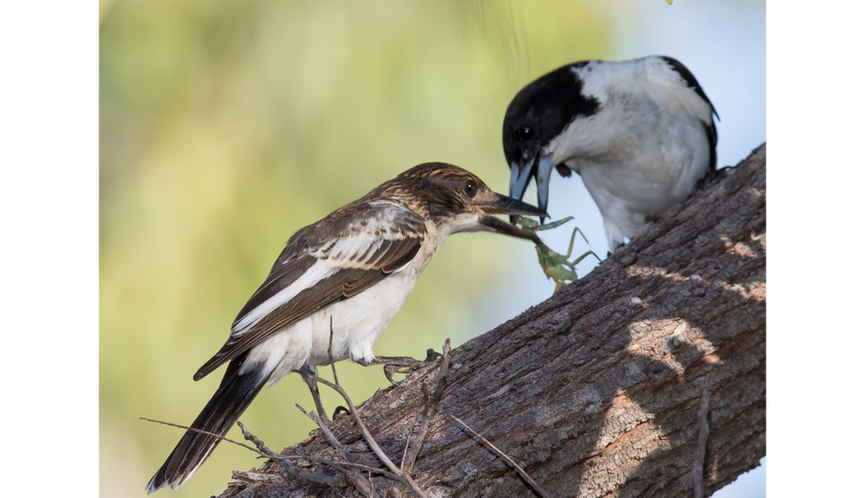Grey Butcherbird
Cracticus torquatus
Quick facts
Other names: None.
Size: Similar to Rainbow Lorikeet; half size of Magpie.
Range and lifestyle: Resident across most of Australia except tropical north.
Food: Mainly insects, and small birds and their babies.
Breeding: Mainly spring. Nest is a bowl of sticks, lined with grass on inside. Eggs 3-5, pale greyish blue or pale green, spotted with reddish-brown. Mum incubates for 3 weeks, but the male feeds her at the nest, and both feed the chicks for a month.
Like most predatory birds, butcherbirds have a powerful bill with a hooked tip that is used to tear up their prey so that it can be easily eaten. However, when an animal is too large to be swallowed, the butcherbird’s clever solution is to wedge it into the fork of a tree, or spear it on a broken branch, to anchor it before cutting it into smaller pieces with the bill. This behaviour explains how the butcherbird got its name. They also sometimes store their surplus food in forks in branches, under bark or on thorns, to eat at a later date.
Grey Butcherbirds feed mainly on large insects and small adult birds, but baby birds and lizards are also eaten. The usual foraging method is to perch on a branch, watching and waiting for movements, then pouncing on the ground or chasing birds in flight. In urban areas, butcherbirds can become quite tame, especially if fed, and they occasionally enter houses in search of scraps.
Of the two species of butcherbirds found in the Brisbane region, the Grey is commoner in backyards and parks with ample trees, while the Pied Butcherbird prefers more open habitats, such as the edges of playing fields, but both species often occur together.
While the Pied Butcherbird is the more accomplished singer, with over 300 known songs around Australia, the Grey Butcherbird also has a beautiful voice, often described as loud piping, with deep, melodious notes as well as harsh unmusical ones. Sometimes two or three birds give song phrases alternately, so that it sounds like only one bird is singing.
Text © Richard Noske 2019 CC BY-NC-SA



















